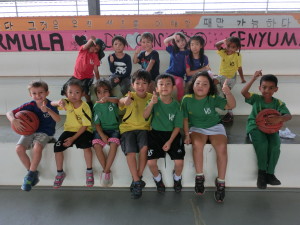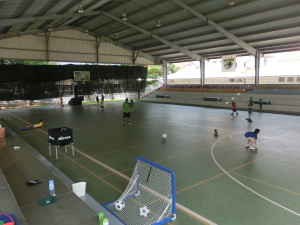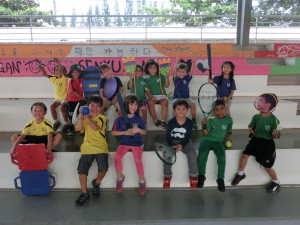Who We Are
This unit is still under construction, sorry…. will be finished soon!
In this unit prep students explore their personal abilities in a variety of sports and teach and learn from one-another.
Central Idea: Awareness of ourselves and others helps us to learn and develop.
Key Concepts: Connection, change, reflection
Related Concepts: Identity, metacognition, learning, thinking, mindset
Lines of Inquiry: 1. Ourselves and others as learners. 2. How learning happens for you and around you (the ways we learn). 3.appreciation of difference and celebration of commonality
Learning Outcomes:
Identity- Phase 1: Describe some physical and personal characteristics and personal preferences
Active Living – Phase 1: Explore and reflect on the changing capabilities of the human body.
Interactions – Phase 1:
This is a prep unit and therefore each week described is a single lesson as the students also participate in swimming sessions.
We began tuning in to this unit with a discussion about our personal likes and dislikes for sport and being active before I asked the students to consider and discuss two questions: What is a sport or activity you think you are good at? What is something you would like to get better at? Students discussed and shared their ideas, we then shared some together as a group. I told the students we would complete a walk and wonder activity to consider our own personal ability with regards to the different sports equipment we had at school. Before the lesson began, we placed a variety of equipment around the basketball court, eg. hoops, scooter-boards, skipping ropes, soccer balls, basketballs, racquets (badminton, tennis), balls, scoops, mats, bean bags, walking stilts/cups etc. At each station, the students discussed the equipment and we then took a photo showing their beliefs in their ability, connecting to the first line of inquiry. Thumbs up = They were competent in that sport. Thumbs sideways = unsure. Thumbs down = They were not experienced in that sport.
The students were then instructed to walk around the court individually to a station and try that piece of equipment out for a couple of minutes. When the whistle blew, they would leave that equipment on the floor and change to a new station. We repeated this process for about 20 minutes so the students could get a good chance at trying each station out. We then had a water break and a class discussion about their favourite activities.
PE equipment set out at different stations Students trying out different equipment
I then asked the students to consider which activity might interest them to try and improve in for future weeks and finished the session off with a quick game of stuck in the mud, because Prep really do enjoy telling deciding what activity to do next and they were pretty keen to get running again.
Learning Experiences (Weeks 2-5)
Week 2 – Equipment selection & video recording.
I began this session in a similar way to last, by revisiting all of the sports equipment around the gym and this time after ten minutes, decide on one activity you would like to get better at. I asked the students to work individually and go to different stations every 90 seconds this time and after the final round, bring back the one item they have selected to try and improve on.
Prep L had their photo taken together while Prep I wanted a circular picture!
We then broke in to groups to work with a teacher and video record the students demonstrating their ability on their piece of chosen equipment. Each student then had a video of themselves (on ipads) and watched themselves in action, looking for things they thought they were doing well. Our time was almost up but once again, the students wanted to play a tag game but it was Octopus that was the favourite this time.
Week 3 – Peer Teaching
At the beginning of this week, we already had the equipment ready that the students had selected from the week before. We were lucky (well some students may have made a decision based on friends) in that most students were able to pair up with a partner. The ones that didn’t would work with a teacher over the next two sessions. In pairs now, the students were instructed that they were to work together, observe and try to help each other improve and therefore start to focus more on the second line of inquiry and the ways we can learn (from others). This learning experience would take up the majority of the activity but the students were instructed that they could take that piece of equipment back to their classroom this time, so they could practice with it at break over the next few days if they liked. Below is a couple of photos of students working together to teach and share information.
Week 4 – Final Practice and recording.
At the beginning of this session, I informed the students that this lesson they would have a little more practice tme with their partner to try and improve before I would video record them again. The students practiced, demonstrated their ability for the camera and took turns watching one-another perform. Upon finishing and still using the ipads, I then asked the students to look at their first videos (from week 2 lesson) and then watch the video they made that day to compare the two and discuss what they can see and if they believe they had made any improvements. This took the majority of the activity as students not only enjoyed watching and commenting videos but also enjoyed watching videos made by their peers and giving feedback to them.
Here is Tom again, after learning from a friend who taught him how to “walk” the balance board.
Week 5 – Expertise teaching
Similar to the first and second weeks lesson, I began by placing a wide variety of equipment out around the court for students to discover. I informed them this time that instead of focusing on something they would like to improve, I wanted them to find an activity they believe they were quite expert at. Once selected, the students would take turns at being an expert and try to teach something to the audience, it may have been some cool move or some sort of trick etc. The lesson was divided in to three parts so that three or four different students could present at a time. Non presenting students were asked to choose a presentation to watch, which demonstration were they interested in watching, After each round, a new group of students would present and again, non-presenting students needed to choose a station to go to and watch their peers present before trying it for themselves.
pic – students working in larger groups
Summative Assessment
To finish off this unit, I decided to continue with a similar theme to what had been explored throughout the unit. That was, learning experiences where students taught and learned from one another. In the lead up to this session, I emailed parents and teachers to help remind the students to bring in some piece of PE equipment from home. Students could bring in skateboards, bicycles, jump ropes, footballs…anything that was associated with physical activity and that they felt they were quite good at demonstrating. The students were then divided in to groups of 4 in order to share their work. The students had spent time during their class sessions with their teachers (as this was a class connected unit) to work on their presentation skills and each student took a turn to present.













